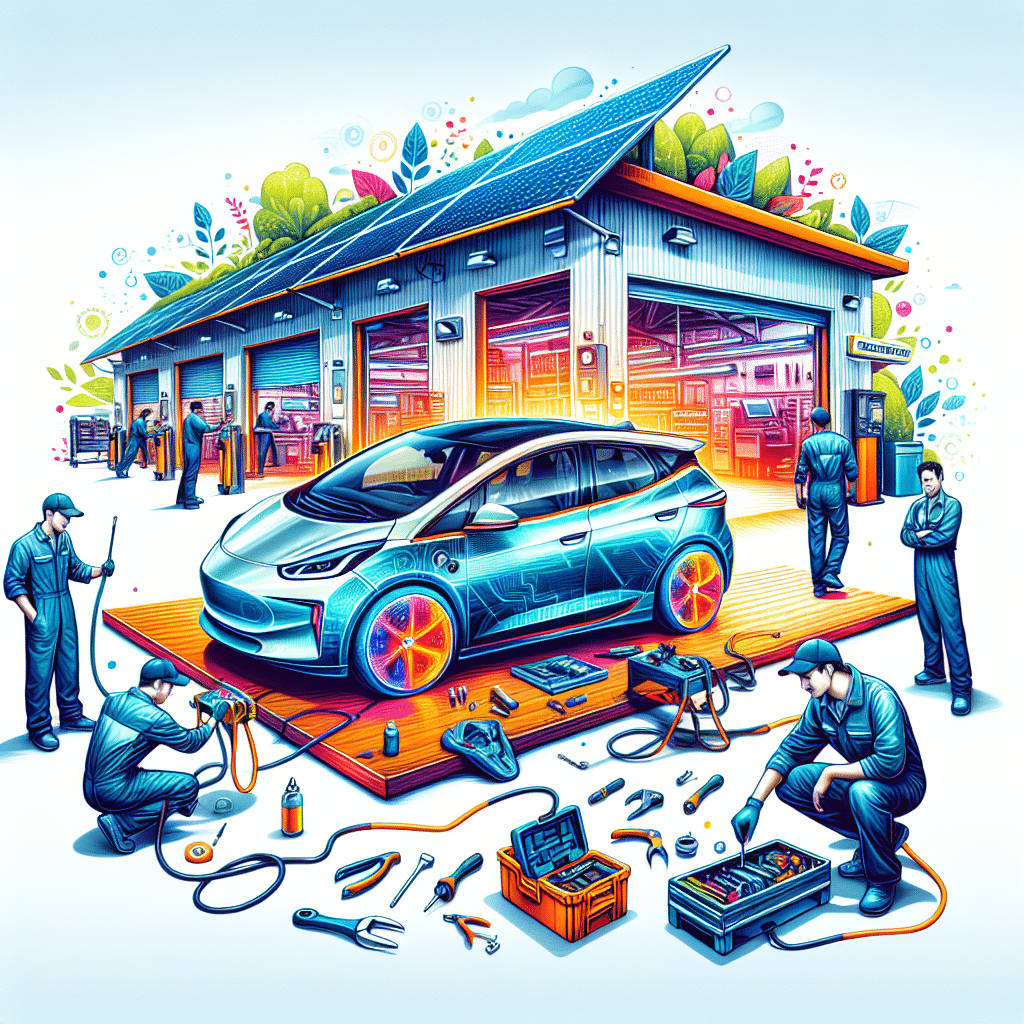Understanding the Service Intervals for Electric Cars
Electric vehicles (EVs) function differently from traditional combustion-engine cars, which fundamentally alters how and when they need servicing. While internal combustion engines require regular oil changes and complex engine repairs, EVs have fewer moving parts, leading to reduced maintenance needs. However, periodic servicing is still essential to ensure optimal performance and longevity.
Key Components of Electric Vehicle Maintenance
Before delving into how often to service an electric vehicle, it’s essential to understand the key components that require attention:
-
Battery System: The heart of any electric car, the battery pack, needs careful monitoring. It is crucial to ensure its health through software updates and battery management system checks.
-
Tires: Tires on electric vehicles may wear differently due to the instant torque produced by electric motors. Regular tire rotations and alignments are necessary.
-
Brakes: Regenerative braking systems in EVs often result in less wear on brake pads, yet brake fluid and pads need checking for optimal operation.
-
Cooling System: EVs utilize liquid cooling for batteries and motors, requiring maintenance checks on coolant levels and system integrity.
-
Cabin Air Filter: Similar to conventional vehicles, an EV’s cabin air filter should be changed periodically to maintain air quality within the vehicle.
Recommended Service Intervals
-
Battery Check: It’s advisable to have the battery checked at least once a year. Many manufacturers recommend a professional inspection every 12,000–15,000 miles to assess battery health, software updates, and electrical connections.
-
Tire Maintenance: Routine tire checks should occur every 6,000 miles. This interval allows you to inspect tread depth, the condition of the sidewalls, and rotate the tires to ensure even wear. Proper inflation is also vital for performance and efficiency.
-
Brake Inspection: Electric cars typically require a brake inspection every 12,000 miles or during your annual service. Regularly checking brake pads and brake fluid maintains system integrity, even if they are not used as frequently as in gasoline vehicles.
-
Cooling System Check: Perform a cooling system check every 24,000 miles or as recommended by the manufacturer. This includes checking the coolant levels and ensuring there are no leaks, as the cooling system is vital for maintaining battery and motor temperature.
-
Cabin Air Filter Replacement: The cabin air filter should generally be replaced every 15,000 to 20,000 miles. This ensures clean air circulates within the vehicle and contributes to overall comfort.
-
Software Updates: Monitoring software is essential for EV operation. Keep an eye out for manufacturer notifications about software updates, which can enhance performance and introduce new features. These are generally performed annually or more frequently as updates are released.
-
Wiper Blades and Fluid: Check wiper blades and fluid every six months. Replacing worn blades and ensuring adequate fluid levels contribute to visibility and safety.
Factors Influencing Service Frequency
Several factors can influence how often you may need to service your electric vehicle:
- Driving Conditions: Frequent city driving, rough terrains, or harsh weather conditions could necessitate more regular checks.
- Driving Style: Aggressive driving can lead to increased wear on tires and brakes, potentially requiring more frequent servicing.
- Vehicle Age: Older EVs may require more routine checks to monitor battery health and other components than newer models.
- Manufacturer Recommendations: Each manufacturer provides specific servicing instructions and timelines that should guide your maintenance schedule.
Keeping Track of Maintenance
To stay on top of servicing your electric vehicle, consider using a dedicated app or an online service management system. Many modern electric cars come equipped with onboard diagnostics that can send alerts and reminders when maintenance is due.
DIY Maintenance
While most maintenance tasks should be handled by professionals, some aspects of electrical vehicle care can be DIY:
- Tire Pressure: Regularly check and maintain proper tire pressure using a tire gauge.
- Cabin Air Filters: With basic tools, some owners can replace cabin air filters at home.
- Wiper Blades: Replacing wiper blades is generally straightforward, and many videos can provide guidance.
Best Practices for Electric Vehicle Maintenance
-
Stay Informed: Follow your manufacturer’s service recommendations in the owner’s manual.
-
Schedule Routine Checks: Set reminders for routine checks, even if they are set further apart than traditional vehicles.
-
Use Quality Parts: When replacements are needed, use manufacturer-approved parts to ensure compatibility and performance.
-
Monitor Performance: Pay attention to how your EV drives and alert your technician of any unusual noises or performance issues, which can indicate a maintenance need.
-
Invest in Home Charging: Having a home charging station allows you to charge and maintain your vehicle daily, enhancing battery health over time.
Understanding Costs
While upfront costs for servicing an EV might seem lower than that of a traditional vehicle, expenses can vary based on the model and regional servicing costs. Battery checks and software upgrades can be significant, so budgeting for upcoming services is wise.
Conclusion
Regular servicing is crucial for electric vehicles to perform optimally and maintain their significant investment in an environmentally friendly mode of transport. Following recommended maintenance intervals ensures your vehicle remains safe, dependable, and efficient for years to come. Keep in mind that some aspects may be unique based on the vehicle’s make and model, so always refer to the manufacturer’s guidelines for specific advice on your electric vehicle.
